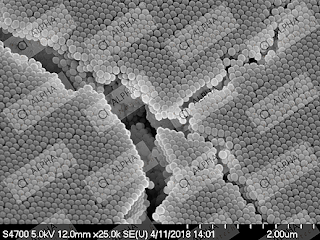Introduction:
In the realm of semiconductor
technology, silicon wafers are the building blocks that enable the production
of integrated circuits and electronic devices. These wafers undergo various
processes and enhancements to meet the stringent requirements of the industry.
In this blog post, we will explore the fascinating world of diced silicon
wafers with a dry oxide coating, focusing on the prime-grade 4-inch silicon
wafers and their significance in semiconductor manufacturing.
Understanding
Diced Silicon Wafers with Dry Oxide Coating:
Diced silicon
wafer with a dry oxide coating refer to the process of cutting a
single large silicon wafer into smaller individual pieces or dies. Each diced
wafer serves as a substrate for the fabrication of individual electronic
components. To enhance the performance and reliability of these diced wafers, a
dry oxide coating is often applied.
Dry oxide coating is a thin layer of
silicon dioxide (SiO2) that is thermally grown on the surface of the diced
silicon wafers. This oxide layer provides a protective barrier, preventing
contamination, reducing surface defects, and improving the electrical
insulation properties of the wafer.
Prime-Grade
4-Inch Silicon Wafers:
Prime-grade4-inch silicon wafers
are considered high-quality substrates widely used in semiconductor
manufacturing. The term "prime-grade" signifies the highest level of
purity and quality among silicon wafers. These wafers undergo a stringent
selection process to ensure minimal defects, uniform thickness, and superior
crystal structure.
| Prime-grade 4 Inch Silicon Wafer |
Applications and
Benefits of Diced Silicon Wafers with Dry Oxide Coating:
Integrated
Circuit Fabrication: Diced
silicon wafers with a dry oxide coating are fundamental in the production of
integrated circuits. The diced wafers serve as the foundation for the
deposition of various layers, including semiconductors, metals, and
dielectrics, enabling the creation of intricate circuitry. The dry oxide
coating acts as an insulating layer, preventing leakage currents and improving
the reliability of the fabricated circuits.
MEMS
(Micro-Electro-Mechanical Systems): Micro-electro-mechanical systems,
commonly known as MEMS, are miniature devices that combine mechanical and
electrical components on a single chip. Diced silicon wafers with a dry oxide
coating are essential in the fabrication of MEMS devices, as they provide a
stable and reliable substrate for the deposition and integration of mechanical
and electrical elements.





